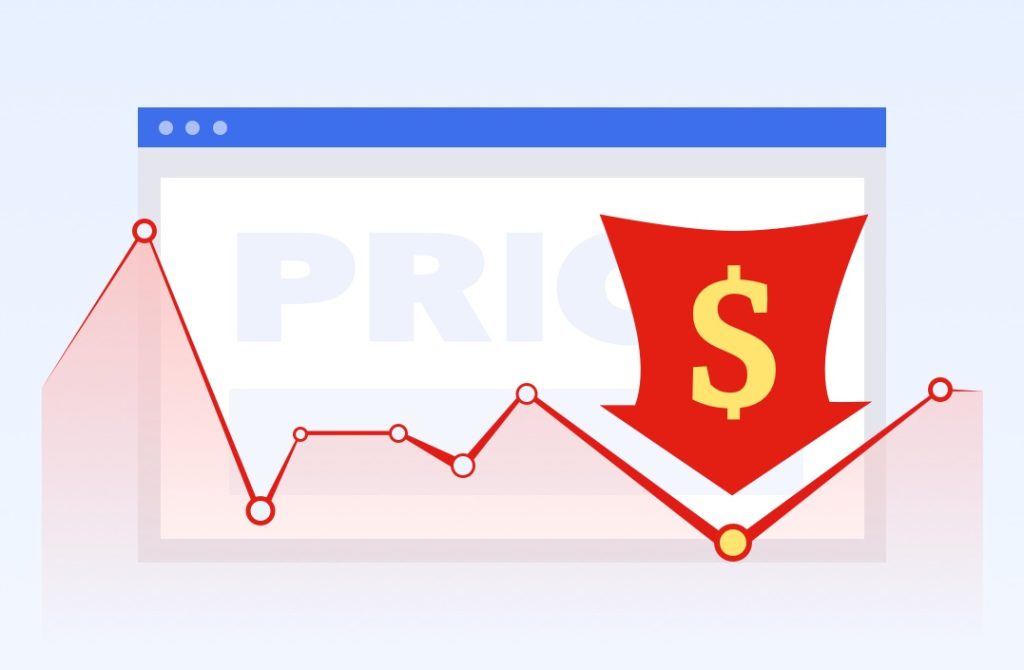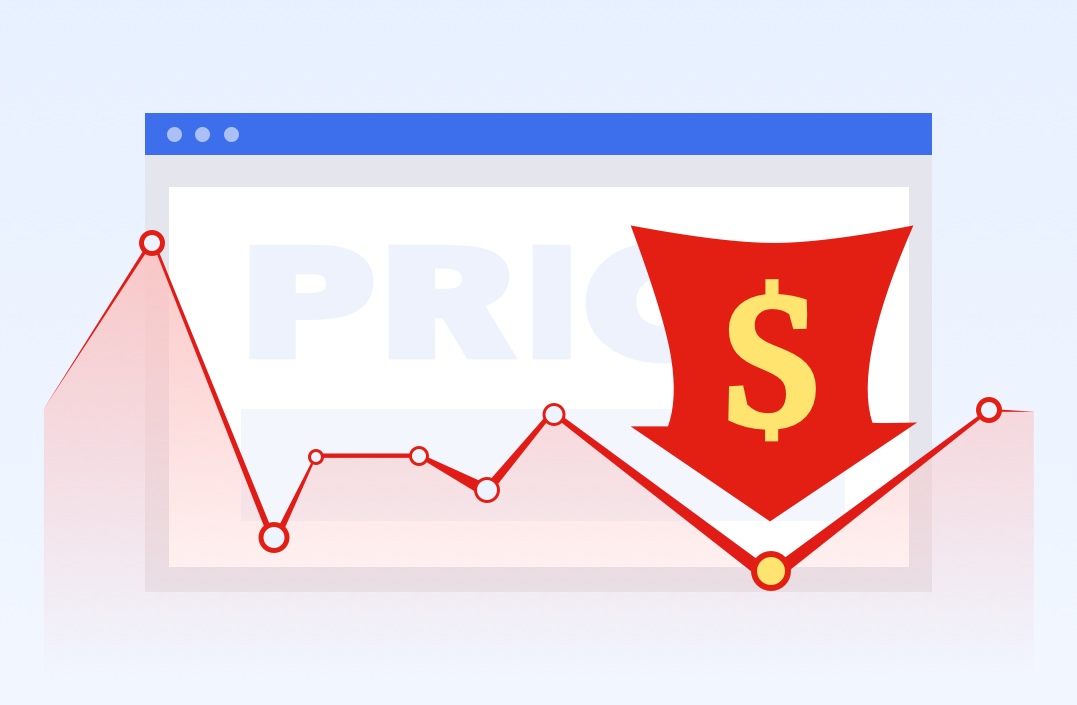Introduction: Rethinking How You Pay for Proxies
In today’s data-driven world, using proxies is essential for tasks like web scraping, SEO tracking, ad verification, and market analysis. But many users are stuck with rigid pricing models that charge flat fees for static IPs or large unused bandwidth quotas.
This is where variable pricing shines.
With Cherry Proxy’s bandwidth-based billing, you only pay for what you use—no more, no less. Whether you’re a developer testing scripts or an enterprise running large-scale data extraction, variable pricing helps you align cost with performance.
Let’s explore what variable pricing is, how it works in the proxy industry, and why Cherry Proxy is leading the way.
What Is Variable Pricing?
Variable pricing means you’re charged based on how much bandwidth you consume, not the number of IPs or ports. It’s a flexible, usage-based model that adapts to your real-time needs.
This model is popular in industries like cloud computing and telecom—and it’s now transforming how proxies are sold.
Instead of being locked into fixed packages, variable pricing lets you:
Use resources freely when needed
Pay less during idle periods
Scale up or down instantly
Cherry Proxy’s Approach to Variable Pricing
Cherry Proxy offers a clean and transparent bandwidth-based pricing structure. You can use as many IPs and concurrent connections as needed, and you’re charged only for total data transferred.
This gives users full flexibility without worrying about session limits, IP caps, or surprise overage charges.
Highlights of Cherry Proxy’s Pricing Model:
Pay-as-you-go bandwidth
No limits on IPs or threads
Real-time usage tracking
No hidden costs
Custom bandwidth plans available
Benefits of Cherry Proxy’s Variable Pricing
1. Budget Optimization
You don’t need to buy a large plan “just in case.” With Cherry Proxy, if you only use 5 GB this month, you only pay for 5 GB. This gives teams better control over budgets and forecasting.
2. Real-Time Cost Visibility
You can monitor bandwidth consumption and spending through Cherry Proxy’s dashboard. This helps avoid overuse and enables smarter planning for high-traffic operations.
3. Ideal for Spiky Workloads
Many users—such as scrapers, ad verifiers, or app testers—have bursts of activity followed by quiet periods. Variable pricing aligns perfectly with such patterns.
4. Suitable for All Business Sizes
Whether you’re a freelancer, small proxy, or multinational company, Cherry Proxy can adapt. No need to worry about outgrowing your plan—just pay for what you use.
5. Risk Reduction
Start small, test the waters, and scale with confidence. Cherry Proxy’s model reduces the financial risk often associated with large upfront purchases.
Common Use Cases That Benefit from Variable Pricing
SEO Proxies
Track search results across regions without being tied to a fixed plan. Scale bandwidth only when reporting or auditing is needed.
E-commerce Price Monitoring
Retailers and resellers can monitor competitor pricing daily or seasonally, paying only for active scraping sessions.
Digital Ad Verification
Validate ads in real-time across multiple locations, then pause usage after campaign audits—saving money during downtime.
Academic Research & Market Studies
Extract public datasets on-demand without recurring costs or long contracts. Ideal for limited-duration projects.
Why Variable Pricing Supports Agile Development
Developers often require proxies for:
Testing scraping scripts
Simulating users from different locations
Debugging automation tools
Instead of purchasing static IP plans that may go unused, variable pricing allows developers to test, iterate, and launch with minimal investment.
And when things scale? Cherry Proxy can grow with your infrastructure.
Comparing Variable Pricing vs. Traditional Proxy Billing
Most traditional proxy providers offer fixed plans:
Pay per IP
Pay per port or session
Fixed monthly fees
This often results in:
Overpaying for unused resources
Limited flexibility
High entry cost for small users
Cherry Proxy’s variable pricing removes these bottlenecks. You get:
Unlimited sessions and IPs
Geo-targeted IP rotation
Billing only for bandwidth used
Better ROI, especially for fluctuating workloads
Advanced Features That Work Well with Variable Pricing
Cherry Proxy also includes:
Residential & Mobile IP pools: Ideal for accurate data collection.
Rotating proxies: Reduce bans and increase success rate.
Geo-targeting by country or city: Reach the right location without extra charges.
HTTPS and SOCKS5 support: Compatibility with most scraping tools and browsers.
These features, when paired with usage-based billing, make Cherry Proxy a complete and affordable solution.
Conclusion: Flexible Pricing = Smarter Proxy Usage
Cherry Proxy’s variable pricing model gives users freedom, fairness, and financial control. Whether you’re running a global ad operation or simply testing a scraping tool, this model keeps your costs aligned with usage.
FAQ
What is meant by variable pricing?
Variable pricing refers to a flexible pricing strategy where the cost of a service or product changes based on usage, demand, or other dynamic factors—rather than being a fixed, flat rate.
In the context of proxies, like those offered by Cherry Proxy, variable pricing usually means:
You pay based on bandwidth usage (e.g., per GB of data transferred)
There are no fixed monthly IP or port limits
Costs scale up or down depending on how much you actually use
This model is ideal for businesses or individuals with changing proxy needs—such as web scraping, SEO monitoring, or ad verification—because it avoids overpaying for unused resources and allows for better cost control.
What is the difference between variable and dynamic pricing?
Variable pricing is a model where the cost changes based on how much you use—like paying per GB of bandwidth with Cherry Proxy—making it predictable and fair. Dynamic pricing, however, adjusts prices in real time based on demand, competition, or user behavior, often seen in airlines or ride-hailing apps. While variable pricing offers transparency and control, dynamic pricing can fluctuate unexpectedly.


